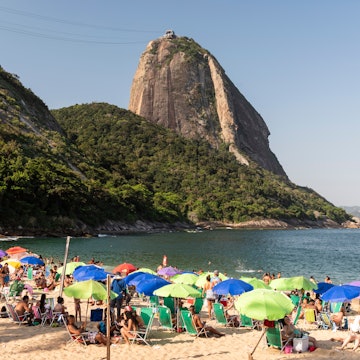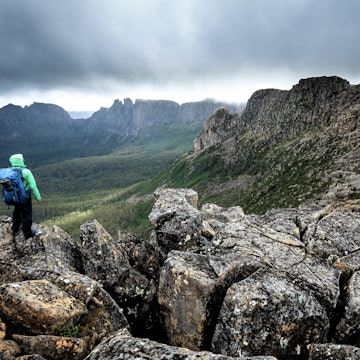

The entry paperwork is a small price to pay for Argentina's spectacular views © Shutterstock / Pakawat Thongcharoen
With its thriving cities, glorious national parks, world-class wine and steaks, and diverse landscapes that range from soaring Andean peaks and high-altitude deserts to pancake-flat grasslands and humid wetlands, Argentina calls out to travelers from across the globe.
Deciding to visit is easy, but the logistics of getting into the country can be a little trickier. Here’s our handy guide to Argentina’s entry requirements, including information on tourist visas, how to extend your stay, traveling with children, and applying to work or study in the country.
Many nationalities do not need a visa to travel to Argentina
First the good news: Argentina’s entry requirements for tourists are relatively straightforward. Most tourists do not need a visa to enter Argentina – this includes visitors from the United States, Canada, Australia, New Zealand, Japan, South Korea, the UK, Ireland, France, Germany and most other Western European countries.
On arrival, eligible tourists generally receive an entry stamp valid for a 90-day stay (though, theoretically, it could be valid for only 30 or 60 days, at the discretion of the immigration officer). If you leave the country – for example, to travel to Chile or Uruguay – you'll need a new stamp to re-enter Argentina, though obtaining one is usually a formality.
Anyone entering Argentina should have a passport valid for at least six months from the date of entry. The police in Argentina can demand to see identification, so carry at least a photocopy of your passport around at all times.

There are some countries that need a visa
Citizens of some countries need a visa to travel to Argentina. If you come from a country that is not on the visa-exempt list, contact the Argentine embassy or consulate in your home country for details of the application process.
Want some help? Let Elsewhere plan your next trip.
Citizens from some countries are asked to pay a reciprocity fee
Citizens from some countries are asked to pay a special reciprocity fee (tasa de reciprocidad) before entering Argentina. This fee is equal to the fee that Argentines are charged for visas to visit those countries. However, many of these arrangements have been abolished in recent years, so contact your local Argentinian embassy or consulate to see if any fees apply.
Travelers can extend their visa for 90 days
Travelers can extend their stay in Argentina for a further 90 days by making an application at the main Dirección Nacional de Migraciones office at Avenida Antártida Argentina 1355 in Buenos Aires. Note that it is only possible to extend your stay once; if you overstay the approved period of entry, you can be fined and ordered to leave the country within 10 days, and you may be barred from re-entry in future.
The fee for extending your stay in Argentina is currently AR$6000 for most travelers, but nationals of many South American countries pay a reduced fee of AR$3000. Applications must be filed between 8am and 2pm from Monday to Friday. Be warned, this can be a rather arduous and time-consuming process, so don't leave things till the last minute.

You can leave Argentina to get a new entry stamp
As an alternative to applying for a visa extension, many travelers opt to cross over to neighboring Uruguay or Chile shortly before their visa expires, returning to Argentina a day or two later and claiming a new 90-day entry stamp at the border. The easiest place to do this is Buenos Aires, taking advantage of regular boat services to Colonia del Sacramento and Montevideo in Uruguay.
There are a couple of things to bear in mind, though. It is important to check the entry requirements for Uruguay or Chile before making the journey, as the entry rules for these countries are often different from the rules for Argentina. Also, hopping over the border to extend your stay multiple times can arouse suspicion amongst Argentine immigration officials, who have the discretion to refuse you entry if they feel you are exploiting the system.
Be sure you get an exit stamp
If you’re departing Argentina via any land border, be sure to get an exit stamp in your passport from the border authorities. Argentine nationals are not required to get a stamp, and bus drivers will often drive straight across the frontier without stopping unless you let them know you need to stop. Failure to obtain an exit stamp can cause problems the next time you try to visit Argentina.
Parents should be sure to have proper documentation for kids
Officially, a mother or father traveling with a dependent child but without the other parent is required to bring a notarized document certifying that both parents agree to the child’s travel to Argentina. If you are separated from the other parent of your child, it's also a good idea to bring a copy of the custody form (if you have one). In practice, there’s a fair chance you won’t be asked for either document, but it pays to be prepared.

Give yourself plenty of time if applying for work or study visa
If you want to work or study in Argentina, you must apply for a special class of visa and meet a complex range of criteria. The process is quite bureaucratic and it requires input from a sponsoring organization, so the paperwork should be completed well in advance of travel. Contact your local Argentine embassy or consulate to find out more about how to make an application.
















